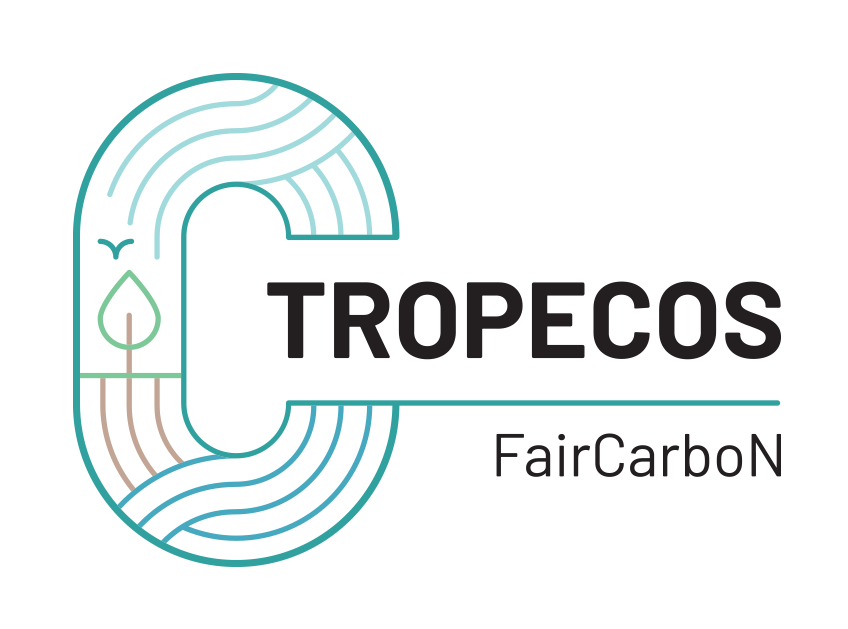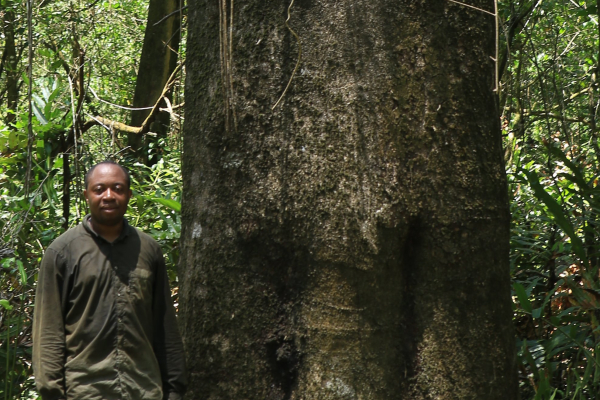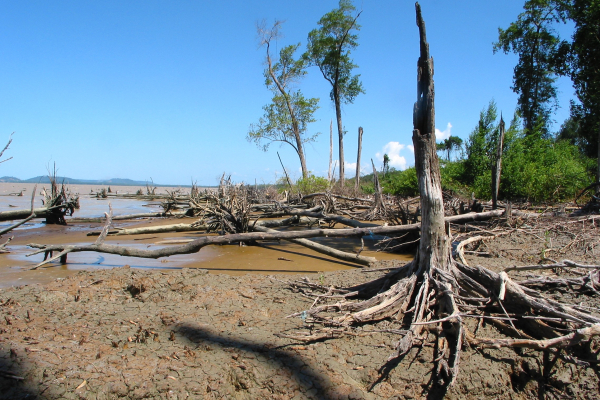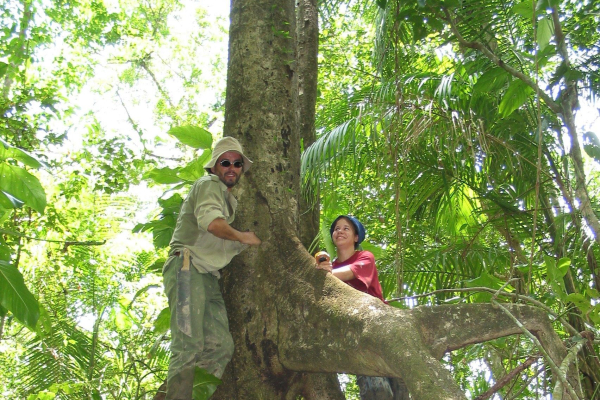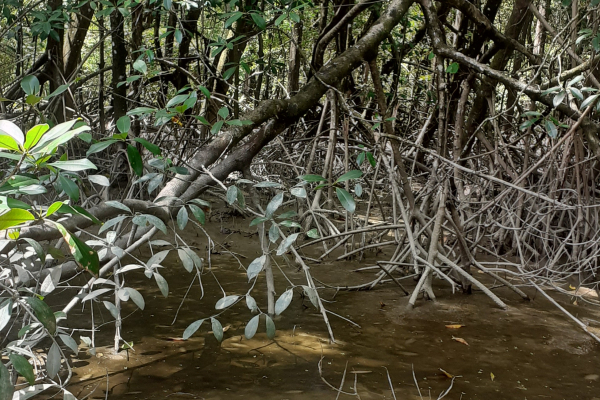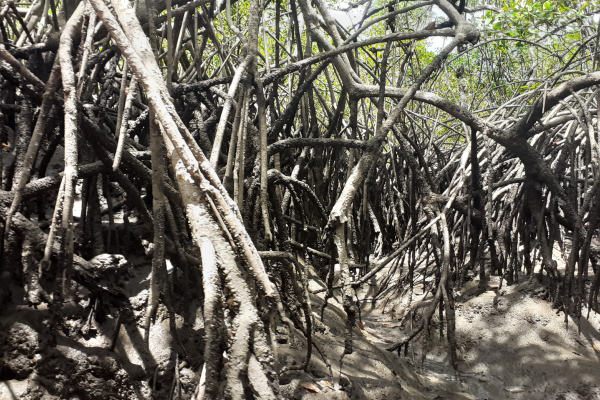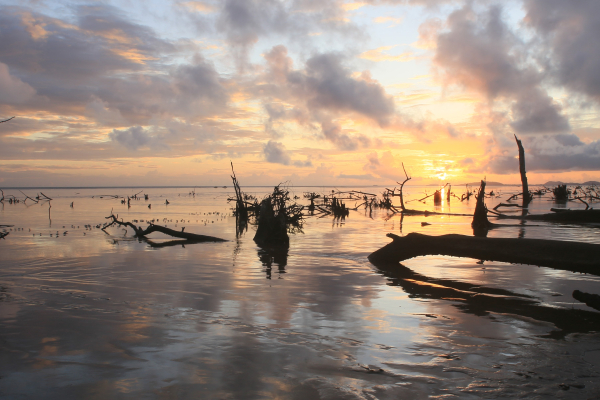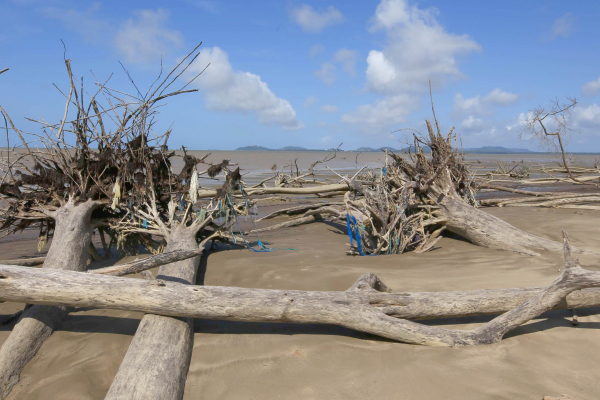French Guiana's mangroves develop along 320 km of coastline, subject to the dispersal system of Amazonian sediments which form the longest open muddy coast in the world (1500 km; Anthony et al. 2010).

From the Amazon to the Orinoco estuary, the influence of Amazonian sediments is shown by a map of suspended particulate matter (SPM) with high concentrations along the coast (yellow). The French Guiana study site is near Cayenne. The Marapanim site in Pará, Brazil is also shown.
In French Guiana, all mangroves are quite well preserved. Coastal mangroves show a fascinating vitality and capacity for renewal, although they can disappear just as quickly as a consequence of intense and erosion phases. Mangrove retreat or seaward expansion rates can be as high as 500 m/year in French Guiana (Proisy et al. 2021).
Previous geochemical studies of undated sediment cores have revealed a combination of allochthonous Amazon River detritus and autochthonous mangrove material, depending on the location of the mangroves, upstream of the rivers or downstream along the coast (Marchand et al., 2003). Carbon storage and sequestration rates need to be better described in this region. A recent publication also shows that the total carbon storage in mangroves, including below- and above-ground components, can be modelled as a function of mangrove stand age and above-ground biomass, the latter of which could be mapped using fine-scale remote sensing techniques (Proisy et al. 2007).

The study area around Cayenne, French Guiana. The green dots correspond to potential sites for field experiments. The full extent of the mangroves will be mapped at fine scale and above ground biomass maps will be produced.
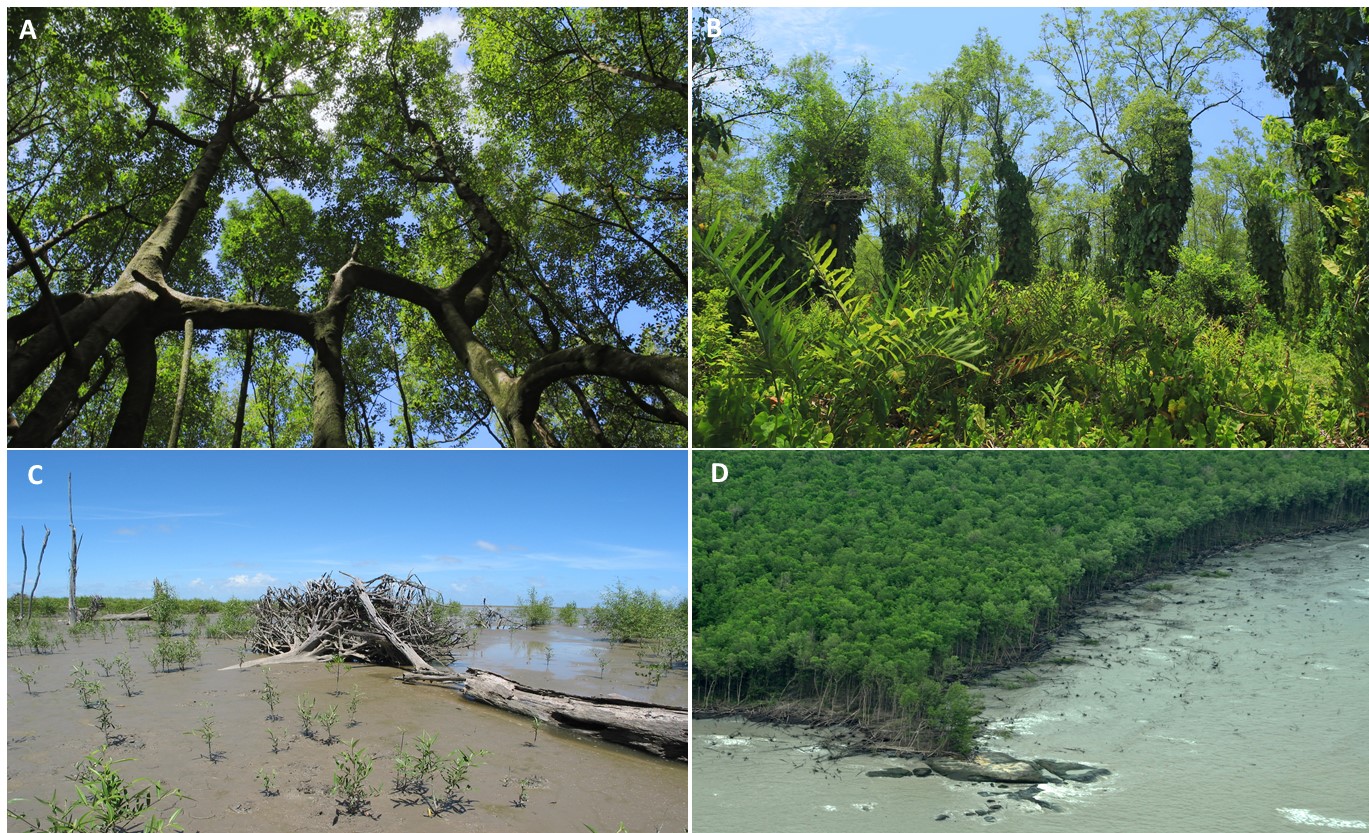
Mangrove forest diversity and the influence of coastal dynamics on forest development. A) A typical 30 m high mature Rhizophora forest (estuarine mangroves). B) A typical decaying 40 m high Avicennia mangrove forest (coastal mangrove). C) The renewal capacity of Avicennia mangroves through opportunistic colonisation processes (Proisy et al. 2009). D) Wave erosion of the mud substrate changes the coastal mangrove landscape extensively and rapidly.
References:
Anthony, E.J., Gardel, A., Gratiot, N., Proisy, C., Allison, M.A., Dolique, F., & Fromard, F. (2010). The Amazon-influenced muddy coast of South America: A review of mud-bank-shoreline interactions. Earth-Science Reviews, 103, 99-121. https://doi.org/10.1016/j.earscirev.2010.09.008
Marchand, C., Lallier-Verges, E., & Baltzer, F. (2003). The composition of sedimentary organic matter in relation to the dynamic features of a mangrove-fringed coast in French Guiana. Estuarine, Coastal and Shelf Science, 56, 119-130. https://doi.org/10.1016/S0272-7714(02)00134-8
Proisy, C., Couteron, P., & Fromard, F. (2007). Predicting and mapping mangrove biomass from canopy grain analysis using Fourier-based textural ordination of IKONOS images. Remote Sensing of Environment, 109, 379-392. https://doi.org/10.1016/j.rse.2007.01.009
Proisy, C., Gratiot, N., Anthony, E.J., Gardel, A., Fromard, F., & Heuret, P. (2009). Mud bank colonization by opportunistic mangroves: A case study from French Guiana using lidar data. Continental Shelf Research, 29, 632-641. https://doi.org/10.1016/j.csr.2008.09.017
Proisy, C., Walcker, R., Blanchard, E., Gardel, A., & Anthony, E.J. (2021). Mangroves: a natural early warning system of erosion on open muddy coasts in French Guiana. In D. Friess, & F. Sidik (Eds.), Dynamic Sedimentary Environment of Mangrove Coasts (pp. 47-63): Elsevier. https://doi.org/10.1016/B978-0-12-816437-2.00011-2
Walcker, R., Gandois, L., Proisy, C., Corenblit, D., Mougin, É., Laplanche, C., Ray, R., & Fromard, F. (2018). Control of “blue carbon” storage by mangrove ageing: Evidence from a 66-year chronosequence in French Guiana. Global Change Biology, 24, 2325-2338. https://doi.org/10.1111/gcb.14100
